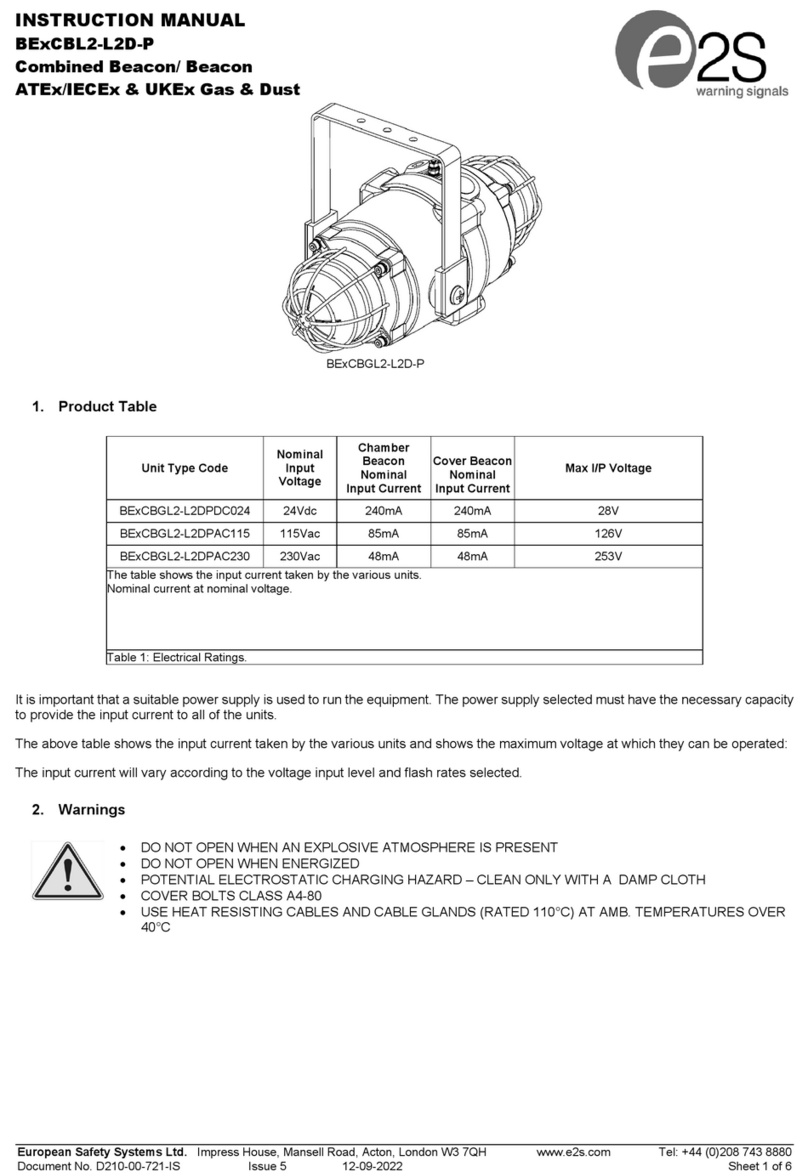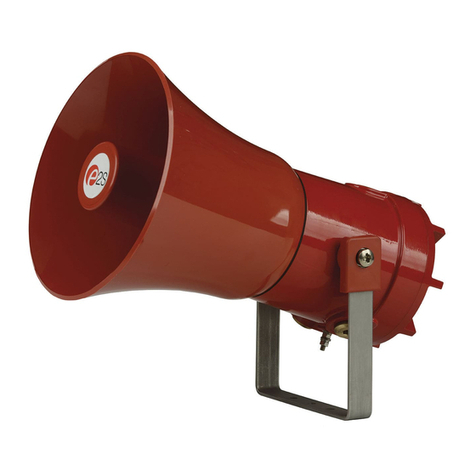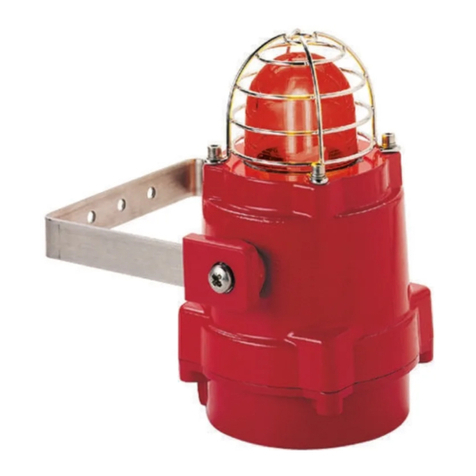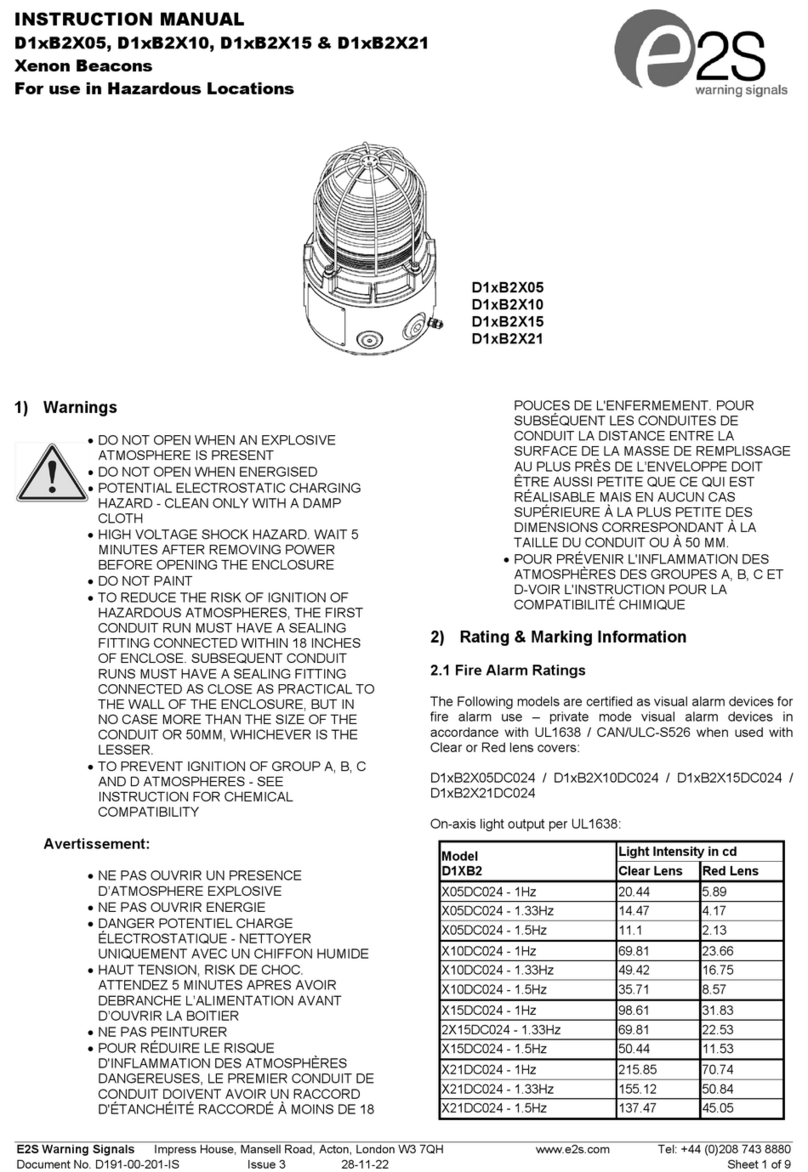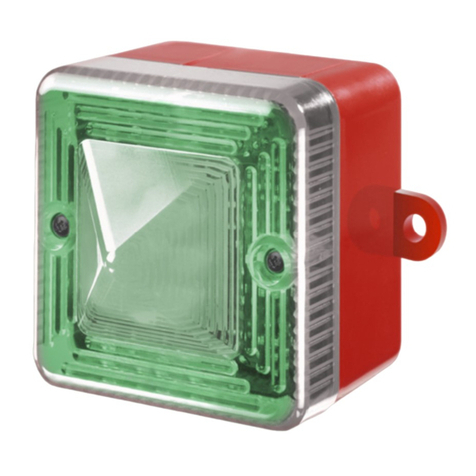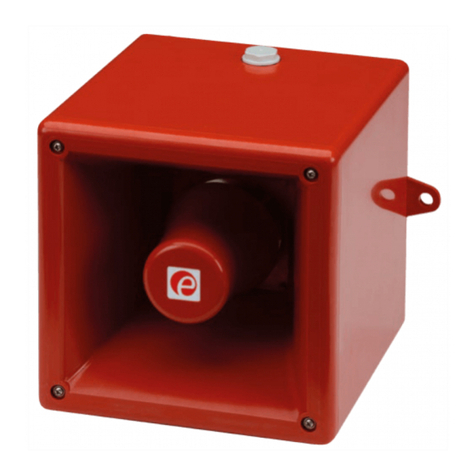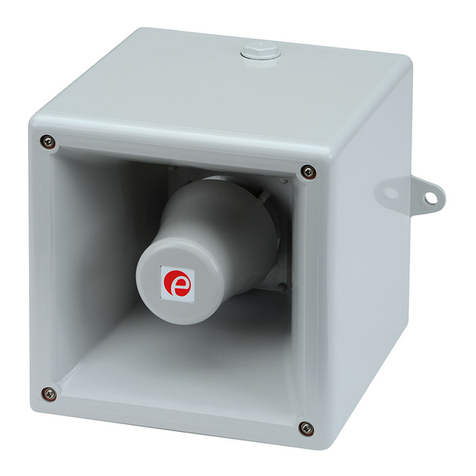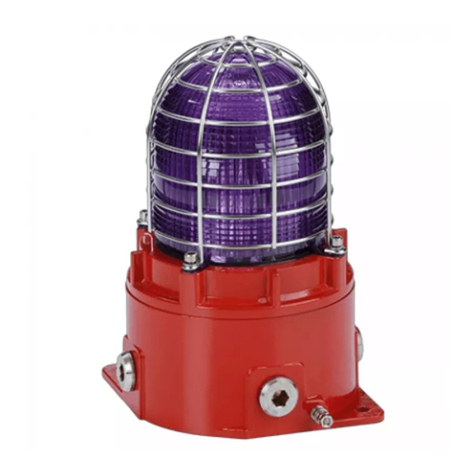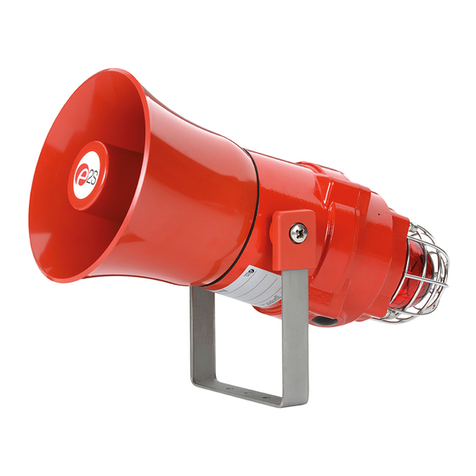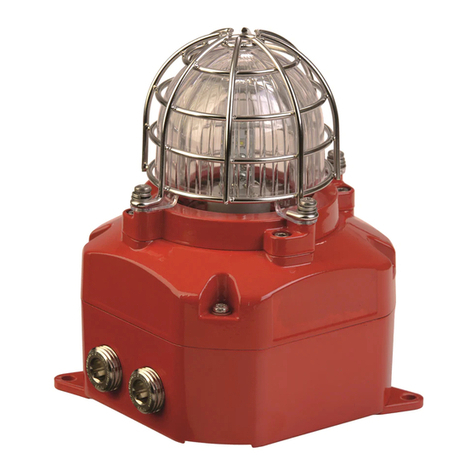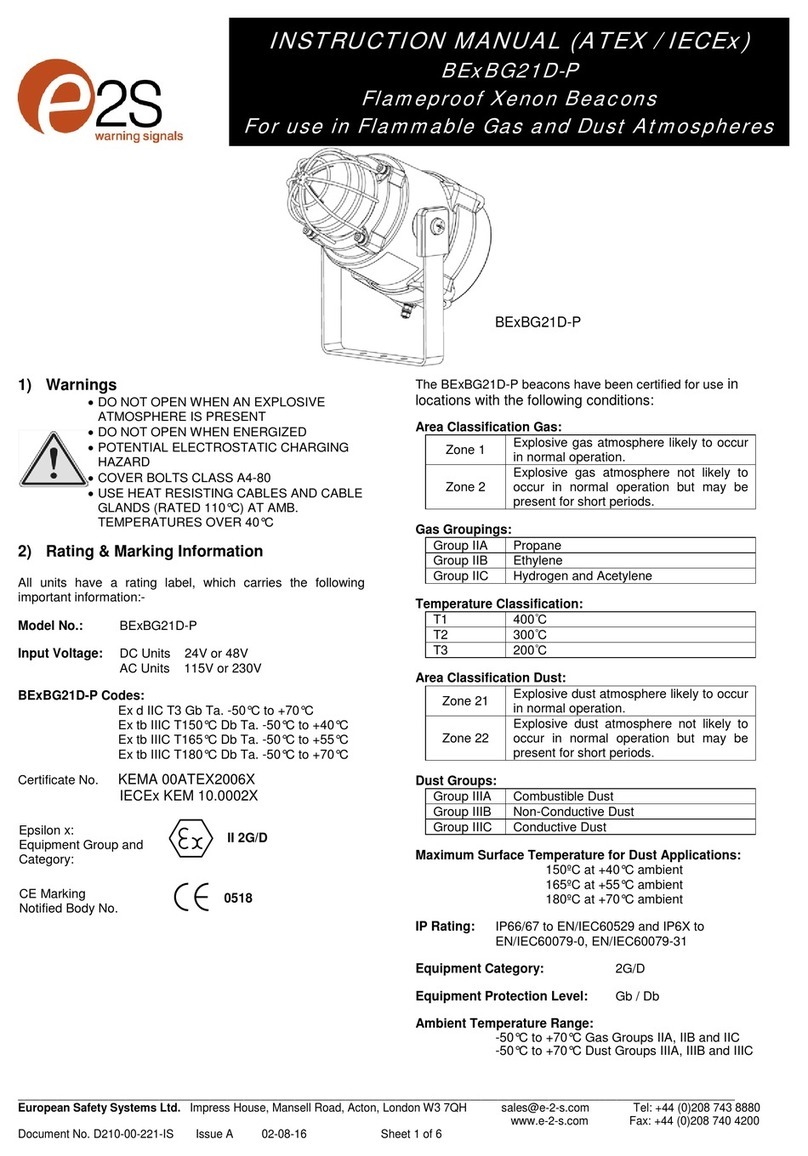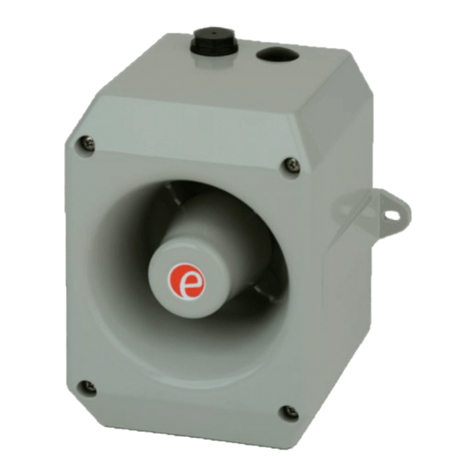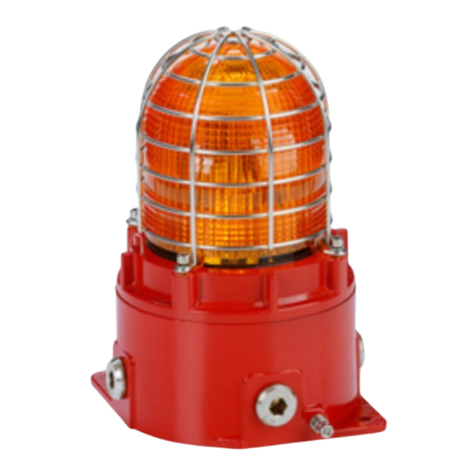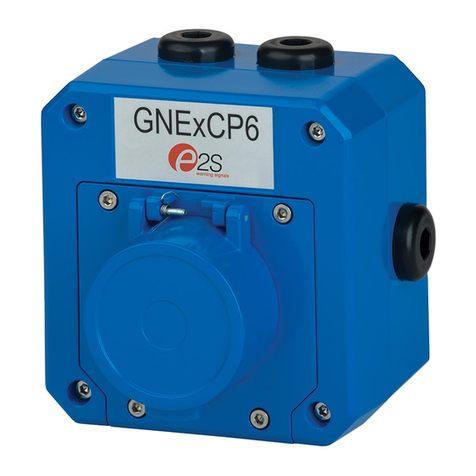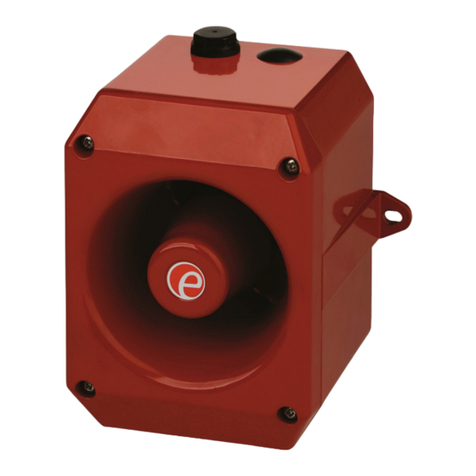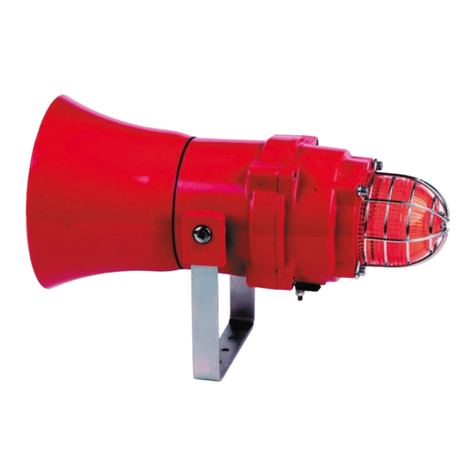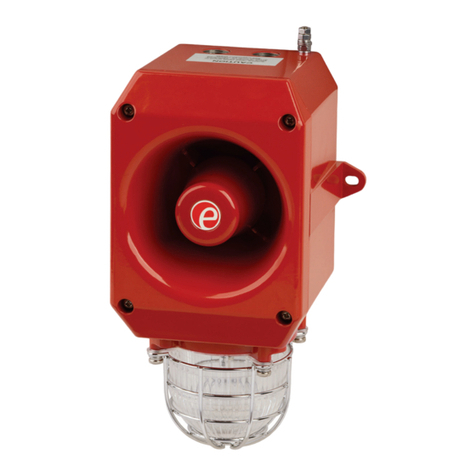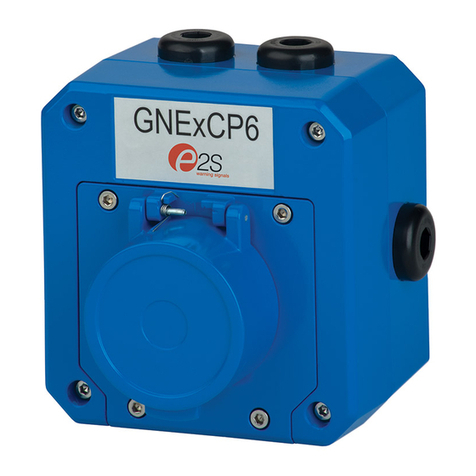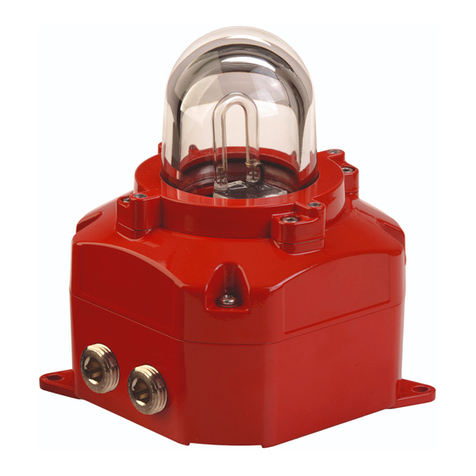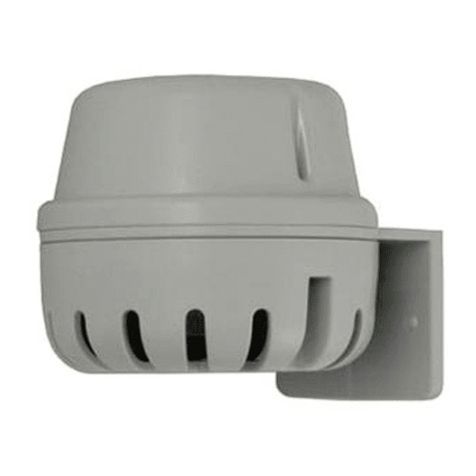9) Cable Selection
When selecting the cable size consideration must be given to
the input current that each unit draws (see table above), the
number of beacons on the line and the length of the cable
runs. The cable size selected must have the necessary
capacity to provide the input current to all of the beacons
connected to the line.
SAFETY WARNING: If the BExBG05D beacons are used at
high ambient temperatures, i.e. over +40ºC, then the cable
entry temperature may exceed +70ºC and therefore suitable
heat resisting cables must be used, with a rated service
temperature of at least 95ºC.
10) Earthing
Both AC and DC beacon units must be connected to a good
quality earth. The units are provided with internal and
external earthing terminals which are both located on the
terminal chamber section of the unit (see figures 2 and 3).
When using the external earth terminal a cable crimp lug
must be used. The cable lug should be located between the
two M5 stainless steel flat washers. The M5 stainless steel
spring washer must be fixed between the outer flat washer
and the M5 stainless steel nut to ensure that the cable lug is
secured against loosening and twisting.
The internal earth bonding wire ensures that a good quality
earth is maintained between the flameproof chamber casting
and the flameproof cover casting.
11) Cable Glands
The BExBG05D beacons have dual cable gland entries which
have an M20 x 1.5 entry thread as standard. Only cable
glands approved for Ex ‘d’ applications can be used, which
must be suitable for the type of cable being used and also
meet the requirements of the Ex ‘d’ flameproof installation
standard BS EN 60079-14 : 1997.
When only one cable entry is used the other one must be
closed with an Ex ‘d’ flameproof blanking plug, which must be
suitably approved for the installation requirements.
For combustible dust applications, the cable entry device and
blanking elements shall be in type of explosion protection
increased safety "e" or flameproof enclosure "d" and shall
have an IP 6X rating according to EN 60529.
SAFETY WARNING: If the BExBG05D beacons are used at
high ambient temperatures, i.e. over +40ºC, then the cable
entry temperature may exceed +70ºC and therefore suitable
heat resisting cable glands must be used, with a rated service
temperature of at least 95ºC.
12) Cable Connections
The cable connections are made into the terminal blocks on
the electronic pcb assembly located in the flameproof
enclosure. See section 7 of this manual for access to the
flameproof enclosure. A four-way terminal block is provided
on both AC and DC beacons. Therefore there are two live
terminals and two neutral terminals for the input and output
wiring on AC units. On the DC units there are two +ve
terminals and two -ve terminals for the input and output
wiring.
Wires having a cross sectional area of up to 2.5mm² can be
connected to each terminal way. If an input and output wire is
required a 2.5mm² wire can be connected to each terminal
way. When connecting wires to the terminals great care
should be taken to dress the wires so that when the cover is
inserted into the chamber the wires do not exert excess
pressure on the terminal blocks. This is particularly important
when using cables with large cross sectional areas such as
2.5mm².
13) Synchronised Operation
All BExBG05D beacons that are connected to the same
supply line will have a synchronised flash rate at one flash
every second. To ensure that the units will be synchronised
check that the pin header is not fitted, i.e. the two header pins
are not shorted together (see Figure 4).
2offM20
Cable Entries
Internal Earth Terminal
Figure 3
Internal
Bonding Wire
Terminal
BExBG05D Beacon Cover Internal View
Figure 4
BExBG05D 5 Joule Beacons
Suppl


